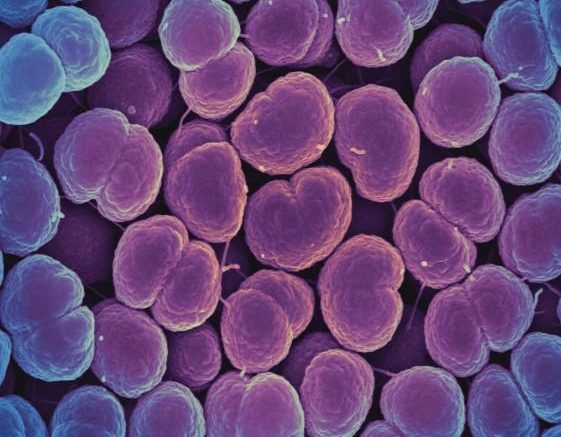New data published by the Centers for Disease Control and Prevention (CDC) show that reported annual cases of sexually transmitted diseases (STDs) in the United States continued to climb in 2019, reaching an all-time high for the sixth consecutive year.
The newly released 2019 STD Surveillance Report found:
• 2.5 million reported cases of chlamydia, gonorrhea, and syphilis, the three most commonly reported STDs in 2019.
• A nearly 30% increase in these reportable STDs between 2015 and 2019.
• The sharpest increase was in cases of syphilis among newborns (i.e., congenital syphilis), which nearly quadrupled between 2015 and 2019.
“Less than 20 years ago, gonorrhea rates in the U.S. were at historic lows, syphilis was close to elimination, and advances in chlamydia diagnostics made it easier to detect infections,” said Raul Romaguera, DMD, MPH, acting director for CDC’s Division of STD Prevention. “That progress has since unraveled, and our STD defenses are down. We must prioritize and focus our efforts to regain this lost ground and control the spread of STDs.”
STDs can have serious health consequences. People with these infections do not always experience disease symptoms, but, if left untreated, some can increase the risk of HIV infection, or can cause chronic pelvic pain, pelvic inflammatory disease, infertility, severe pregnancy and newborn complications, and infant death.
CDC’s 2019 data provide the most recent full picture of STD trends in the United States before the COVID-19 pandemic. Preliminary 2020 data suggest that many of these concerning trends continued in 2020, when much of the country experienced major disruptions to STD testing and treatment services due to the COVID-19 pandemic.
The burden of STDs increased overall and across many groups in 2019. But it continued to hit racial and ethnic minority groups, gay and bisexual men, and youth the hardest.
Racial/Ethnic Minority Groups
• In 2019 STD rates:
o For African American or Black people were 5-8 times that of non-Hispanic White people.
o For American Indian or Alaska Native and Native Hawaiian or Other Pacific Islander people were 3-5 times that of non-Hispanic White people.
o For Hispanic or Latino people were 1-2 times that of non-Hispanic White people.
Gay and Bisexual Men
• Make up nearly half of all 2019 primary and secondary syphilis cases.
• Gonorrhea rates were 42 times that of heterosexual men in some areas.
Young People Aged 15–24 years
• Make up 61% of chlamydia cases.
• Make up 42% of gonorrhea cases.
“Focusing on hard-hit populations is critical to reducing disparities,” said Jo Valentine, MSW, associate director of the Office of Health Equity in CDC’s Division of STD Prevention. “To effectively reduce these disparities, the social, cultural, and economic conditions that make it more difficult for some populations to stay healthy must be addressed. These include poverty, unstable housing, drug use, lack of medical insurance or regular medical provider, and high burden of STDs in some communities.”
Before the COVID-19 pandemic, reductions in STD screening, treatment, prevention, and partner services contributed to STD increases for many years. Since the pandemic began, large numbers of STD program staff at the state and local level have been deployed to the COVID-19 response, which can lead to more delays in services.
According to one survey, as of January 2021 about one-third of state and local STD program staff were still deployed to assist with COVID-19 response efforts. Staff also report burnout as they pivot from COVID-19 back to STD intervention and partner services. As noted in the recent report on sexually transmitted infections by the National Academy of Sciences, Engineering, and Medicine, “COVID-19 pandemic has exposed weaknesses in public health preparedness due to weak infrastructure, an under-capacitated and under-resourced workforce, and limited surge capacity.”
The COVID-19 pandemic exacerbated an already stretched system for STD control in the United States and accelerated the need to deliver accessible, high-quality STD services in new ways. CDC has identified several new and innovative ways STD services can meet more people where they are—during the COVID-19 pandemic and in the future—including:
• STD express clinics, which provide walk-in testing & treatment without a full clinical exam.
• Partnerships with pharmacies & retail health clinics, which can provide new access points for STD services (e.g., on-site testing and treatment).
• Telehealth/telemedicine, which can close gaps in testing and treatment, ensure access to healthcare providers, support self-testing or patient-collected specimens, and is especially critical in rural areas.
Many of these services are among the strategies highlighted in the recently released HHS Sexually Transmitted Infections National Strategic Plan, which provides a roadmap to develop, enhance, and expand prevention and care programs at the national, state, tribal and local levels over the next five years to reverse the course of the STI epidemic.
“STDs will not wait for the pandemic to end, so we must rise to the challenge now,” Romaguera said. “These new data should create a sense of urgency and mobilize the resources needed, so that future reports can tell a different story.”
Source: CDC

Be the first to comment on "Reported STDs Reach All-Time High for 6th Consecutive Year"